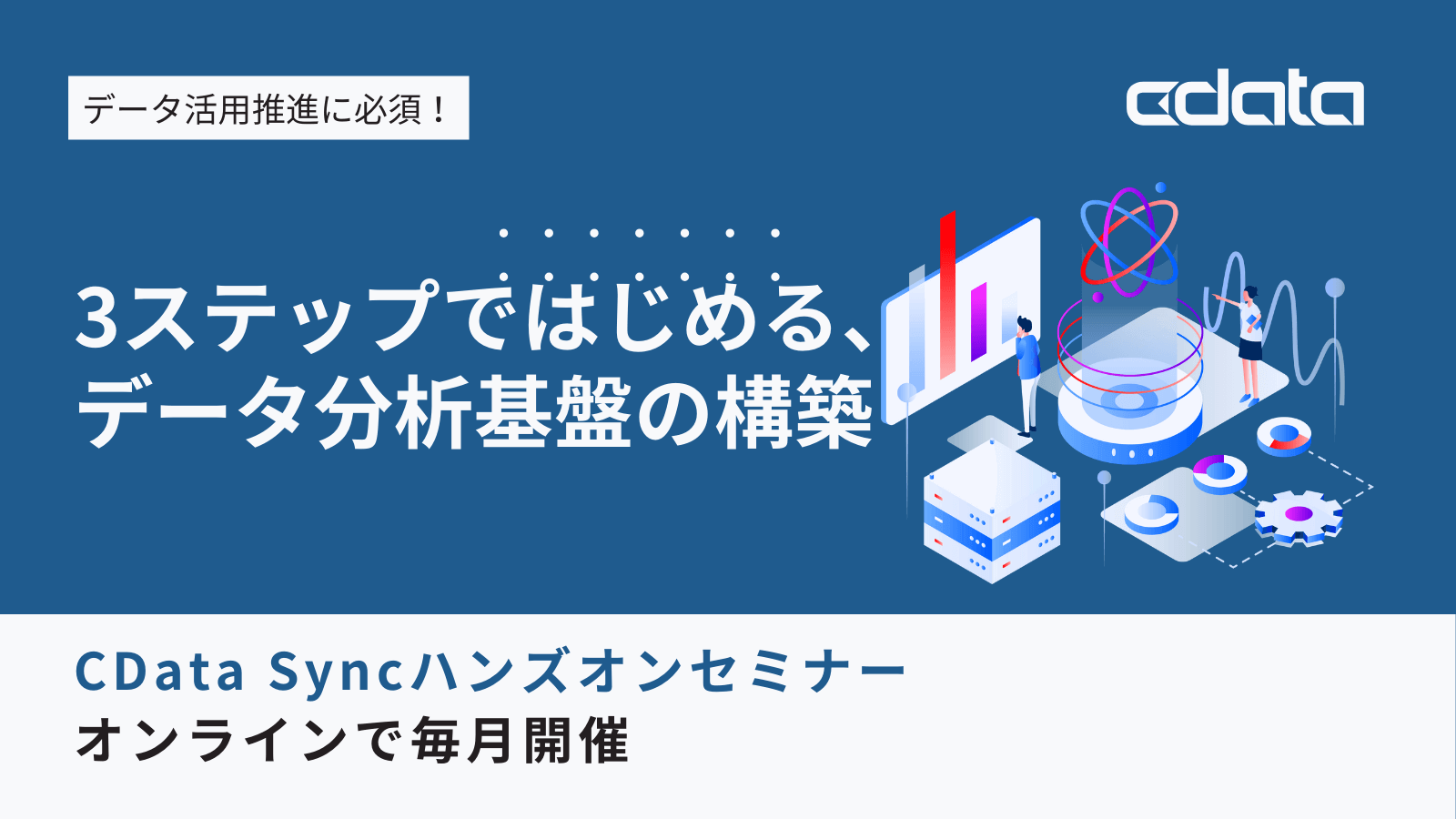ノーコードでクラウド上のデータとの連携を実現。
詳細はこちら →CData Software Japan - ナレッジベース
Latest Articles
- MySQL のデータをノーコードでREST API として公開する方法:CData API Server
- CData Sync AMI をAmazon Web Services(AWS)で起動
- Connect Cloud Guide: Derived Views, Saved Queries, and Custom Reports
- Connect Cloud Guide: SSO (Single Sign-On) and User-Defined Credentials
- Connect Cloud クイックスタート
- Shopify APIのバージョンアップに伴う弊社製品の対応について
Latest KB Entries
- DBAmp: Serial Number Expiration Date Shows 1999 or Expired
- CData Drivers のライセンスについて
- Spring4Shell に関する概要
- Update Required: HubSpot Connectivity
- CData Sync で差分更新を設定
- Apache Log4j2 Overview
ODBC Drivers
- [ article ] PHP からAutify データに接続する方法
- [ article ] MySQL Workbench でCSV データをクエリ
- [ article ] Crystal Reports にSage 50 UK を連携してSage 50 UK ...
- [ article ] Excel からMicrosoft Query を使ってBullhorn CRM に接続する方法
JDBC Drivers
- [ article ] Microsoft OneDrive データをR で分析
- [ article ] APOS Live Data Gateway でOracle Sales ...
- [ article ] ColdFusion でInstagram データに連携する方法
- [ article ] KNIME でYahoo! Shopping のJDBC ドライバーを有効にする
SSIS Components
- [ article ] Salesloft をSSIS 経由でSQL サーバーにバックアップする
- [ article ] SSIS を使ってSybase データをSQL Server にインポート
- [ article ] SSIS を使ってReckon Accounts Hosted データをSQL Server ...
- [ article ] SSIS を使ってQuickBooks POS データをSQL Server にインポート
ADO.NET Providers
- [ article ] SSRS レポートサーバーにADO.NET Provider を配置してAmazon S3 連携
- [ article ] SSAS でDropbox データに連携するOLAP Cube を作成
- [ article ] SSRS レポートサーバーにADO.NET Provider を配置してXero 連携
- [ article ] Crystal Reports にAdobe Commerce を連携してAdobe ...
Excel Add-Ins
- [ article ] CDATAQUERY 関数を使って、Excel スプレッドシートにMoney Forward ...
- [ article ] Mac OS X 上のMS Excel でMicrosoft Planner データを連携利用
- [ article ] Power View でのAzure DevOps データのインポートとビジュアライズ
- [ article ] Power View でのMailChimp データのインポートとビジュアライズ
API Server
- [ article ] OData データをBoard に連携してビジュアライズを作成
- [ article ] Snowflake へのOData データのETL/ELT パイプラインを作ってデータを統合する方法
- [ article ] OData データをPowerShell script でSQL Server ...
- [ article ] インテリジェントオートメーションRPA、Blue Prism でOData データを連携利用
Data Sync
- [ article ] Twitter データからSQL Server ...
- [ article ] e-Sales Manager データのAzure SQL への自動レプリケーション。
- [ article ] Snowflake へのMarketo データのETL/ELT ...
- [ article ] ローカルCSV ファイルへのBacklog データのETL/ELT ...
Windows PowerShell
- [ article ] Neo4J データをPowerShell script でSQL Server ...
- [ article ] PowerShell からBullhorn CRM ...
- [ article ] PowerShell を使ってSage 50 UK データをSQL Server にレプリケーション
- [ article ] PowerShell からPayPal データに接続してデータの更新・挿入・削除を実行する方法
FireDAC Components
- [ article ] Delphi のAzure Analysis Services データへのデータバインドコントロール
- [ article ] Delphi のGreenplum データへのデータバインドコントロール
- [ article ] Delphi のMicrosoft Exchange データへのデータバインドコントロール
- [ article ] Delphi のOracle Financials Cloud データへのデータバインドコントロール





